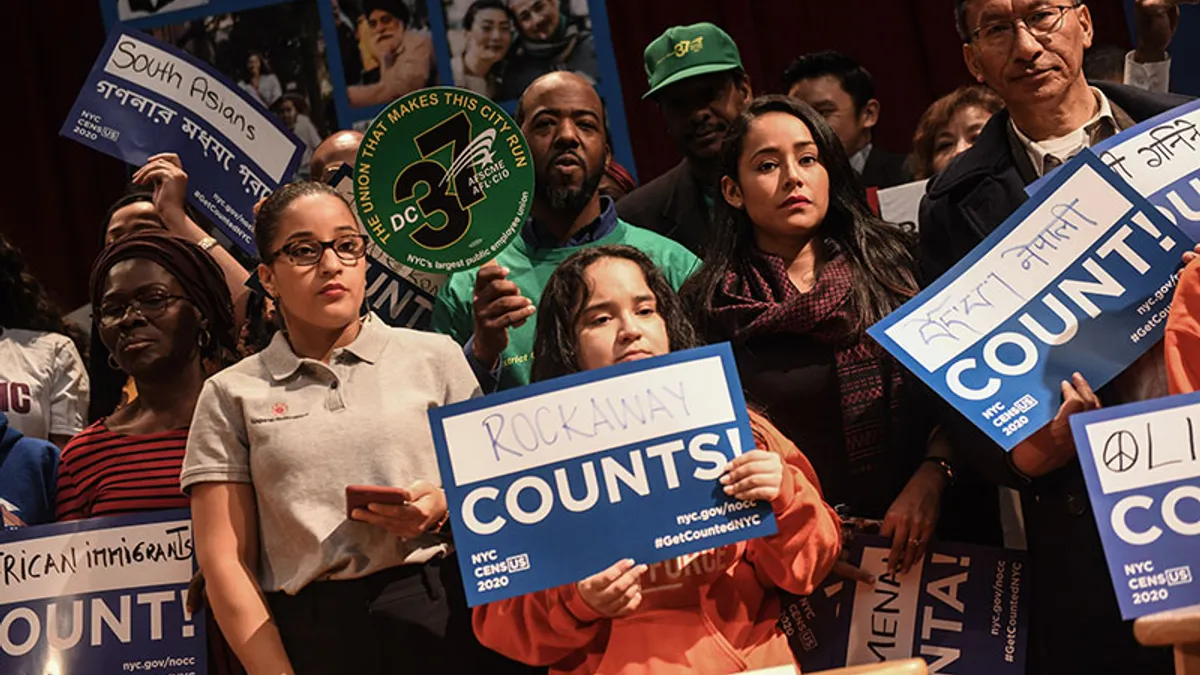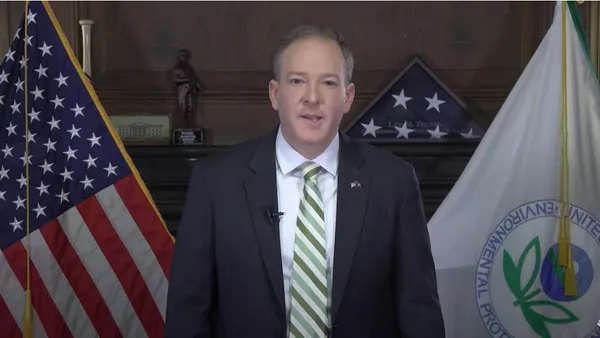UPDATED: May 5, 2020: The U.S. Census Bureau announced it will restart some 2020 census field operations in select areas this week. All returning field staff will go through mandatory safety training and wear personal protective equipment (PPE) before resuming operations.
Part of this operation restart will include update leave operations, to drop census invitations at front doors. This does not require human contact. Workers in area census offices (ACOs) will also return to the office to support the update leave operations.
This announcement comes three weeks after U.S. Secretary of Commerce Wilbur Ross and U.S. Census Bureau Director Steven Dillingham urged Congress to grant a 120-day extension on the deadline for final 2020 Census response counts to be delivered.
Under Ross and Dillingham’s proposal, the window for field data collection and self-responses would be extended to Oct. 31, with counts delivered to the president by April 30, 2021. Data would then be delivered to states for legislative redistricting no later than July 31, 2021.
Dive Brief:
- The U.S. Census Bureau has suspended field operations until June 1 (changed from April 15) in an effort to protect the health and safety of volunteer/temporary workers and the communities they're reaching, as the new coronavirus (COVID-19) continues to spread.
- As of Wednesday morning, 11 million households have responded to the census, and the Bureau encourages residents to continue responding online, via phone or through mail-in form.
- The Bureau said it will continue closely evaluating 2020 census operations and adjusting such operations, including any potential in-person visits, as needed.
Dive Insight:
The suspension of field operations will most directly impact update enumerate (UE) operations that are targeted at rural areas, such as northern parts of Maine and southeast Alaska, to update address lists and enumerate responses.
It will also likely have an impact on counting homeless groups at shelters or meal centers. Service-Based Enumeration (when hard-to-count populations are enumerated at the locations where they receive services) was slated to take place from March 30 through April 1.
Otherwise, the March suspension of field workers likely won't have an enormous impact on urban areas, though it's possible that other operations will be uprooted if the spread of COVID-19 doesn't slow down. The biggest impact could be on non-response follow up (NRFU) in May, Cara Brumfield, a senior policy analyst at the Georgetown Center on Poverty and Inequality, told Smart Cities Dive.
"Without the ability to knock on doors and follow-up with people who didn't self-respond, the Bureau is going to be in a pinch in terms of getting responses from those folks," Brumfield said of NRFU operations.
As in-person census efforts face a growing threat of suspension, Brumfield said it's more important than ever that people understand how to self-respond to the census, either online or via phone or mail-in form — but even those self-response efforts have their challenges.
"'Get out the count' efforts are going to have to get more creative and lean more on digital for outreach, but who does that leave behind? I imagine the same people who are facing the digital divide in the first place and have less access to the internet to fill out their form that way," Brumfield said.
It's unclear the long-term impact this will have on the overall 2020 census count, or if the U.S. Census Bureau will take more drastic measures to postpone the count due to COVID-19. The Bureau did not respond to requests for comment in time for publication.
To keep up with all of our coverage on how the new coronavirus is impacting U.S. cities, visit our daily tracker.











